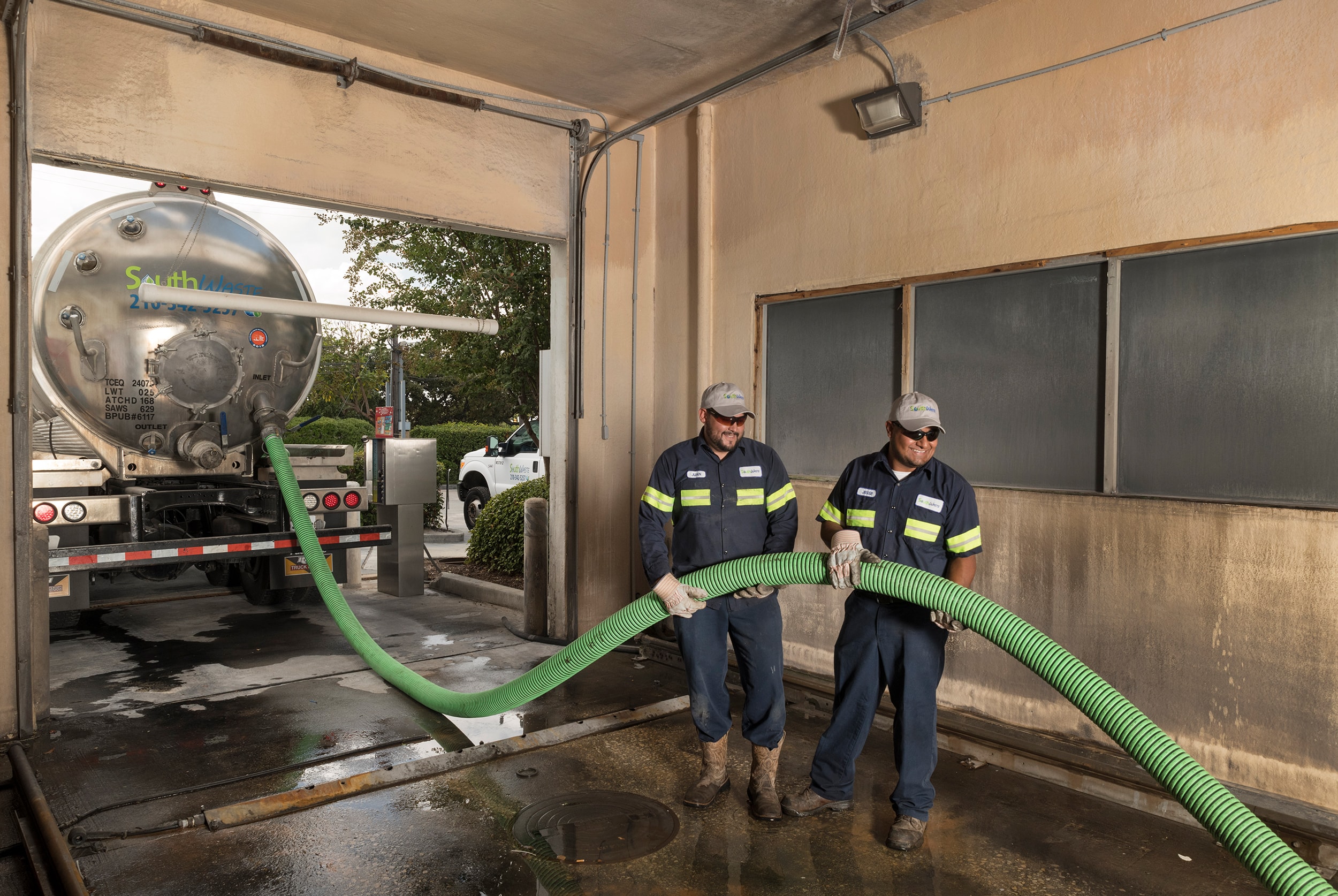What is a Grit Trap?
Sand and grit traps are commonly used at car washes and car dealerships. When vehicles are washed, the dirt and debris that comes off of them is captured in a sand or grit trap. These businesses need to hire a waste management company to clean out and dispose of any dirt these traps may hold.
A sand and grit trap is two chambers, primary and secondary, to isolate oils and solid waste from water. The water that is collected from the end of a car wash goes into the primary separate chamber and the oil will float to the top as the solid waste will sink to the bottom.
A pipe is built in the middle of the chamber, below the oil but above the solid grit. Clean water flows through this pipe into the second chamber, where gravity separates any remaining oil or sand from water. The water continues through a pipe in the middle of the chamber that leads out towards a sewage system.
Grit Traps and the Law
In most areas, local plumbing codes regulate the maintenance and disposal of dirt collected in sand and grit traps. The maintenance and upkeep on these traps are critical because if they overflow, car wash traps can transport sand and grit to sewer systems and clog this system. This can be extremely expensive to fix.
In Texas your can find your regulations here: https://www.tceq.texas.gov/downloads/assistance/publications/rg-389.pdf
In Florida you can find your regulations here: https://floridadep.gov/greasewaste
Why is Grit Trap Maintenance Important?
Businesses generating semi-liquid waste must also consider their sand and grit traps, which can be contaminated with benzene, lead, and other oil. The proper disposal of this is very important for safety purposes. In fact, the way in which you dispose of your sand and grit waste can be a matter of life or death. Your choice in a waste disposal company can also be very important as your company will be liable of how your waste is transported. If the sewage system is clogged, you’ll want a reliable company that keeps accurate records that could prove your company is innocent.
Benefits of Grit Trap Maintenance
- Reduce maintenance and repair costs.
- Reduce risk of clogs and flooding.
- Maintain compliance with local regulations.
- Protect downstream processes
How do I tell if my sand trap needs to be cleaned?
Here is what to look for:
- Water is much higher in the primary chamber and normal in the secondary chamber (clogged crossover pipe).
- Water overflows your primary chamber lid (clogged crossover pipe).
- Water overflows both the primary and secondary chamber lids (clogged outgoing pipe).
- Both chambers are full of oil and grit (grit trap is full; pipes may also clog).
If you notice any of these things, give Southwaste a call today!
How often should you pump your traps
Sand traps and grit traps will require different cleaning and maintenance depending on the area’s local regulations. A standard time for cleaning is once or twice a year, but you’ll want to stay on top of these requirements. You should hire a legally registered service to clean out these pumps when a pipe gets clogged.
Why Choose Southwaste Disposal for Grit Trap Maintenance?
When it comes to grit trap maintenance, Southwaste Disposal is the best choice for your business. Our highly trained professionals have years of industry experience and can easily handle any job. Our competitively priced rates are affordable for all businesses, no matter their size or budget constraints. And last but not least, we’re fast and reliable–so you won’t have to worry about waiting around for days on end!
Grit traps are an important part of plumbing system maintenance. If you don’t have a grit trap, your drain pipes will become clogged with sediment and debris that can cause blockages and other problems. Southwaste Disposal can help you with all of your grit trap cleaning needs, so contact us today!

